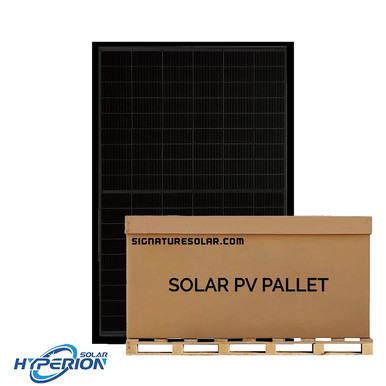Solar
I have reached the point where I am 99.999% sure on the components and scale of my specific solar system.
The heart of the system will revolve around the EG4 18kw all in one unit.

 signaturesolar.com
signaturesolar.com
One of the reasons for using this inverter over the EG4 6000XP is the UL1741SB compliance in my county. The need for this specific UL listing is going to be required by code. Additionally, the amount of PV input is higher in a single 18kPV than 2 of the 6000XPs.
For the array I will most likely go with a pallet of these dudes

 signaturesolar.com
signaturesolar.com
This array will be capable of producing 14.4kW per peak sun hour and I can simply run 4 strings of 9 panels in series into the 18kPV inverter.
For the Energy storage I will start with a full rack of these

 signaturesolar.com
signaturesolar.com
A full 6-slot rack will provide 30.72kWh of storage capacity. Considering avoiding discharging the batteries down below 20%, I would be looking at about 24.57kWh of usable storage capacity with the ability to expand if needed with another rack and one 100amp hour battery at a time to meet my needs. The fire suppressant in the batteries is a hard stop in the system.
Adding all the bits and components up for the complete system will run right around $20k, hooking up to the utility company would be $26k and then a monthly bill.
I have reached the point where I am 99.999% sure on the components and scale of my specific solar system.
The heart of the system will revolve around the EG4 18kw all in one unit.

EG4 18KPV Hybrid Inverter | All-In-One Solar Inverter | 18000W PV Input | 12000W Output | 48V 120/240V Split Phase | EG4 18KPV-12LV
Signature Solar provides solar panels, off-grid solar systems, grid-tie, and hybrid systems. Quality solar inverters, bifacial solar panels, complete solar kits, solar batteries. Featuring brands such as EG4 Electronics with their solar battery, LifePower4 and EG4 LLifePower4 and EG4 LL
 signaturesolar.com
signaturesolar.com
One of the reasons for using this inverter over the EG4 6000XP is the UL1741SB compliance in my county. The need for this specific UL listing is going to be required by code. Additionally, the amount of PV input is higher in a single 18kPV than 2 of the 6000XPs.
For the array I will most likely go with a pallet of these dudes

14.4kW Pallet - Hyperion 400W Bifacial Solar Panel (Black) | Up to 500W with Bifacial Gain | Full Pallet (36) - 14.4kW Total
Signature Solar provides solar panels, off-grid solar systems, grid-tie, and hybrid systems. Quality solar inverters, bifacial solar panels, complete solar kits, solar batteries. Featuring brands such as EG4 Electronics with their solar battery, LifePower4 and EG4 LLifePower4 and EG4 LL
 signaturesolar.com
signaturesolar.com
This array will be capable of producing 14.4kW per peak sun hour and I can simply run 4 strings of 9 panels in series into the 18kPV inverter.
For the Energy storage I will start with a full rack of these

EG4 LL-S Lithium Batteries Kit | 30.72kWh | 6 Server Rack Batteries With Pre-Assembled Enclosed Rack | With Door & Wheels | Busbar Covers
Signature Solar provides solar panels, off-grid solar systems, grid-tie, and hybrid systems. Quality solar inverters, bifacial solar panels, complete solar kits, solar batteries. Featuring brands such as EG4 Electronics with their solar battery, LifePower4 and EG4 LLifePower4 and EG4 LL
 signaturesolar.com
signaturesolar.com
A full 6-slot rack will provide 30.72kWh of storage capacity. Considering avoiding discharging the batteries down below 20%, I would be looking at about 24.57kWh of usable storage capacity with the ability to expand if needed with another rack and one 100amp hour battery at a time to meet my needs. The fire suppressant in the batteries is a hard stop in the system.
Adding all the bits and components up for the complete system will run right around $20k, hooking up to the utility company would be $26k and then a monthly bill.



